Now, not only traveling to distant countries, but in a nearby supermarket, you can find quite exotic fruits next to apples and oranges. Only many often find it difficult to decide on their purchase: what if the purchase is unsuccessful and the taste of overseas food disappoints? To avoid such doubts, you need to try to get acquainted with the fruit in absentia and learn more about it. The first on the list of delicious exotic may well be carambola - the fruit is not only overseas, but also very beautiful.
Material Content:
Carambola - what kind of fruit, description?
Star fruit, starfruit, cannon and the fifth corner are all common names for the exotic fruit carambola (averrhoa carambola).
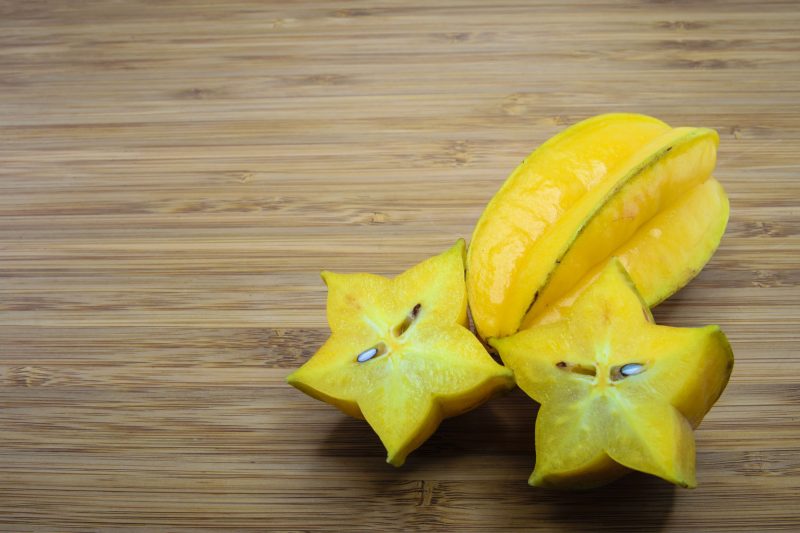
The evergreen plant itself belongs to the sorrel family and the Moluccas are considered to be its homeland. The tree grows slowly and can reach 3-5 meters in height. It is interesting that its green leaves, covered with a white fluff from below, are very photosensitive and therefore gather for the night.
But of great gastronomic interest are the fruits of carambola, similar to oblong ribbed airships. Their flesh is not only very tasty, but also juicy. This makes carambola an excellent thirst quencher.
Currently, the fruit in wild form and in a cultivated form grows in Thailand, India, Ghana, the USA (Florida), Malaysia, Indonesia, Israel, and Hawaii.
How is it?
The fruit of carambola is completely edible in its raw form. Before serving, the fruit must be carefully washed in warm water to wash off the dust that has accumulated between the ribs of the fruit and the chemicals that help to better maintain the starfruit during transportation. After that, it remains only to cut it into slices, stars.
If you wish, you can spend a little more time to remove soft bones and with a thin layer cut off the yellow peel and dark veins. Bright stars will be able to decorate any simple dessert: ice cream, pastries, cocktails.
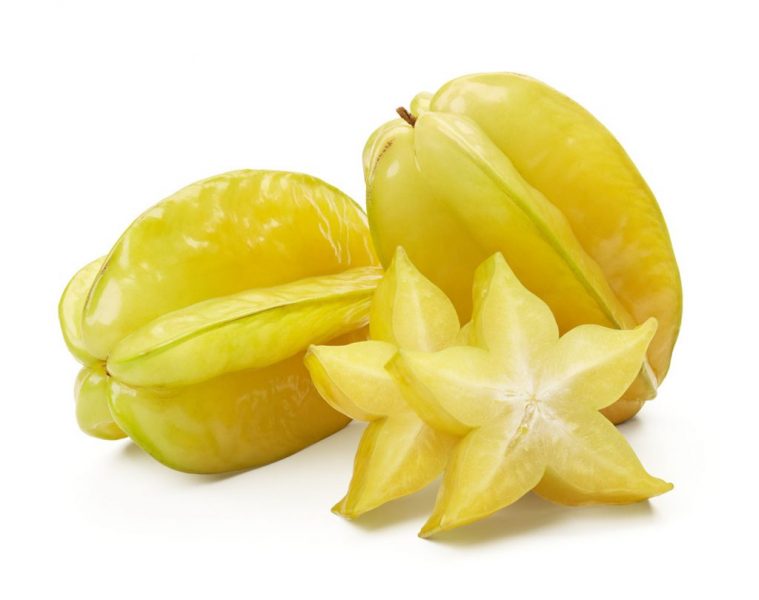
There are several other options for eating carambola:
- You can make candied fruits from it, as well as from watermelon peels.
- Star slices can be added to jam or jam. This will give the workpiece not only an additional flavor, but also make the finished product more attractive.
- You can make delicious fruit salad with carambola. For example, mixing equal amounts of apples, pears, bananas, kiwi, carambola and pomegranate seeds. Pour fruit mixture from above with Beilis liqueur or season with sweet yogurt.
- The juice of this exotic fruit can be turned into a delicious sorbet. In Hawaii, lemon juice, carambola and gelatin are mixed for this.
- Unripe fruit can be used in stews. It just needs to be cut across slices about one centimeter thick and added to the rest of the ingredients (vegetables and meat).
What taste does carambola have?
The story of what kind of fruit carambola will not be complete, if not to talk about its taste. Although it will be difficult to accurately describe it, since it is not like anything else, and everyone, having tried it, will first draw its own analogies.

For some, the elastic, like nectarine, carambola pulp tastes like green gooseberries, an apple and a cucumber at the same time. Another her taste is a combination of plums, apples and grapes in one fruit. To the third, it seems that the aroma of star fruit is the same as the gooseberry, and the taste is like that of a plum.
It is worth noting that juicy and slightly spicy flesh does not darken and oxidize for a long time, therefore, beautiful stars will remain beautiful for a long time on a glass with a cocktail or in a fruit salad.
Composition, calorie content and benefits of fruit
90% of the carambola fruit consists of water, this explains its low calorie content. The nutritional value of 100 g of this exotic fruit ranges from 31-35 kilocalories. The ratio of proteins, fats and carbohydrates is 1/0/7.
In a significant amount, the composition of carambola includes minerals such as calcium, phosphorus, iron, sodium, and potassium. Having eaten one ripe exotic fruit, you can get a vitamin charge from thiamine (vitamin B1), riboflavin (vitamin B2), pantothenic acid (vitamin B5), beta-carotene (vitamin A) and ascorbic acid (vitamin C).
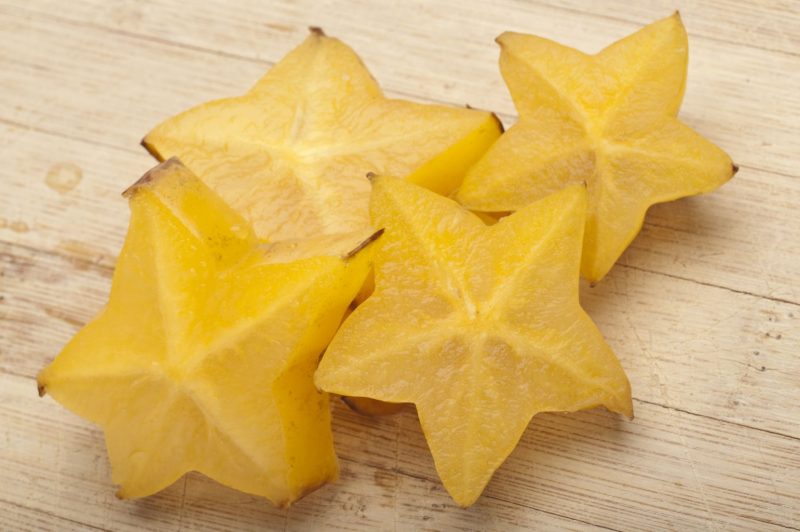
Such a rich composition explains the following beneficial properties of the plant:
- The fruits of carambola can improve the protective functions of the body and increase immunity, lower blood pressure, relieve headaches, fevers and intestinal colic.
- The leaves and roots of the plant are also used in the treatment of eczema, chickenpox, ringworm. Pounded with sugar roots are used for poisoning.
- Carambol Indians have been used to normalize bile levels, relieve hangovers and diarrhea.
In an area where carambola is as common as our apples (for example, Sri Lanka), it is actively used in the household. With the help of its juice, stains are removed from clothes, brass and copper taps are polished.
How to choose carambola?
In order not to be disappointed in an exotic fruit, you need to be able to choose it correctly. It is difficult enough to do this, without having a complete idea of what a ripe fruit should be. The situation is often complicated by the fact that such overseas goods are sent to us in an unripe form for the successful transportation and preservation of the presentation.
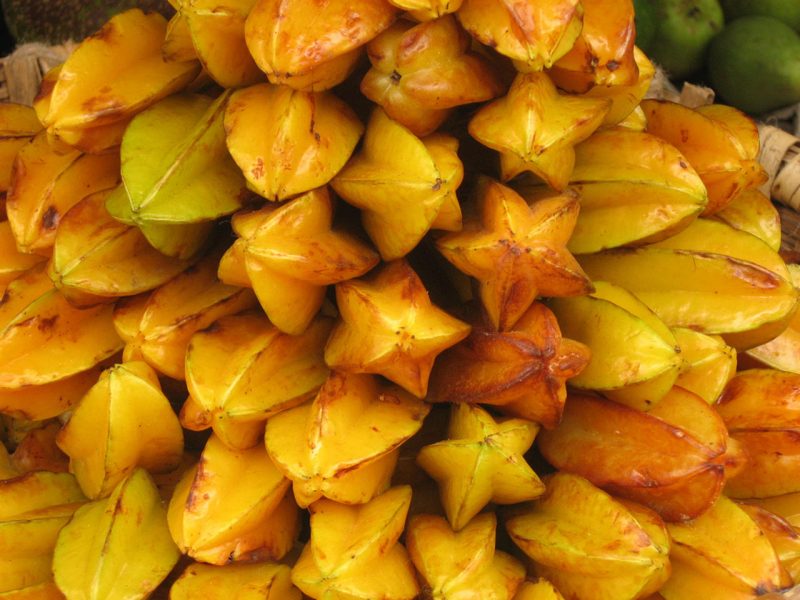
The result of mistakes in choosing carambola can be the purchase of a green and juicy, but very sour fruit, if the fruit is not ripe, or absolutely tasteless with hard to chew veins - in the case of long-term storage or overripe.
There are a number of factors that you need to pay attention to when choosing any fruit: the fruits should be without any damage, the color may be heterogeneous, but without dark spots.
Since there are two varieties of carambola (sweet and sour and sweet), differing in appearance, lovers of sweet exotic need to pay attention to yellow or yellow-green fruits with fleshy ribs along which there is a brown stripe. If you need sweet and sour carambola, then her ribs should be narrow with clear edges.
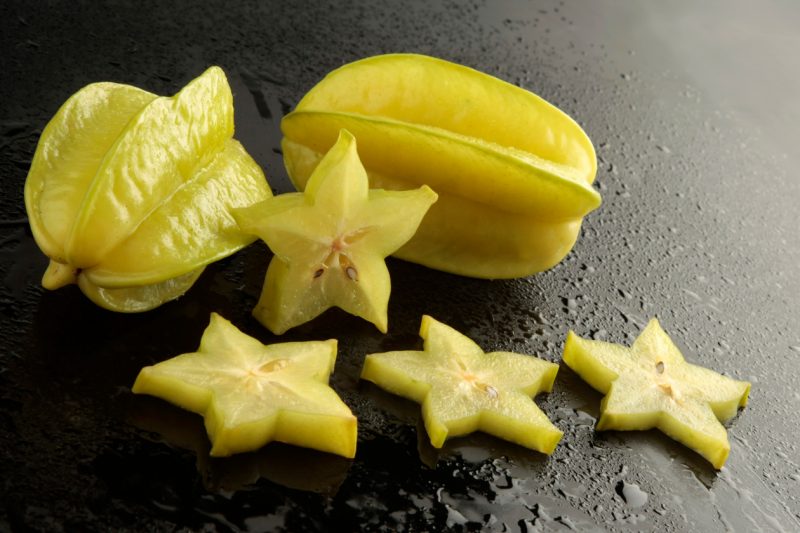
In determining maturity, the size of the fruit does not matter. Depending on the type of carambola, it may take the form of a large kiwi or orange. But regardless of size, the ripe fruit resembles the delicate aroma of jasmine.
Another point that you need to pay attention to when choosing is the elasticity of the fetus. When pressed, no dents should remain.
Contraindications
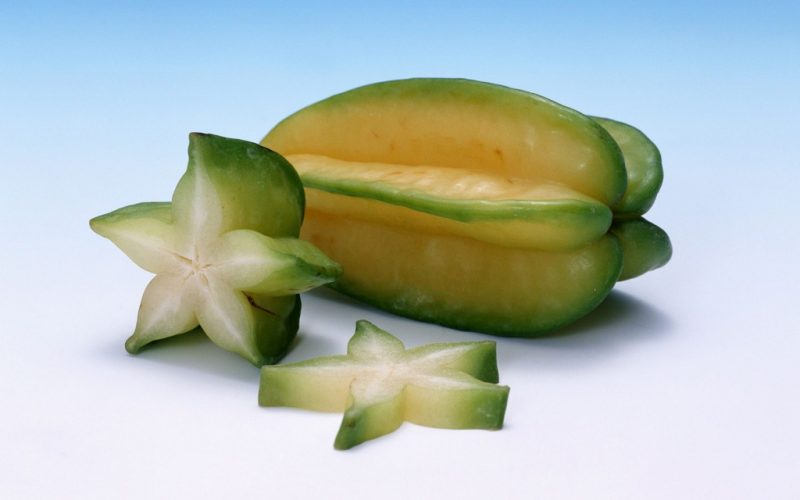
Carambola, with all its usefulness, nevertheless has some contraindications to its use:
- You should exclude star fruit from your diet for people with diseases of the gastrointestinal tract (such as a duodenal ulcer or stomach, enterocolitis, gastritis) especially during periods of exacerbation. This is due to the high content of oxalic acid in the fruits.
- Eating large amounts of carambola acidic fruits can make a significant difference in salt metabolism and cause kidney failure.
- Do not forget about such a moment as individual intolerance to the product. Since carambola is an outlandish fruit in our latitudes, allergic reactions associated with its use in food are possible.












